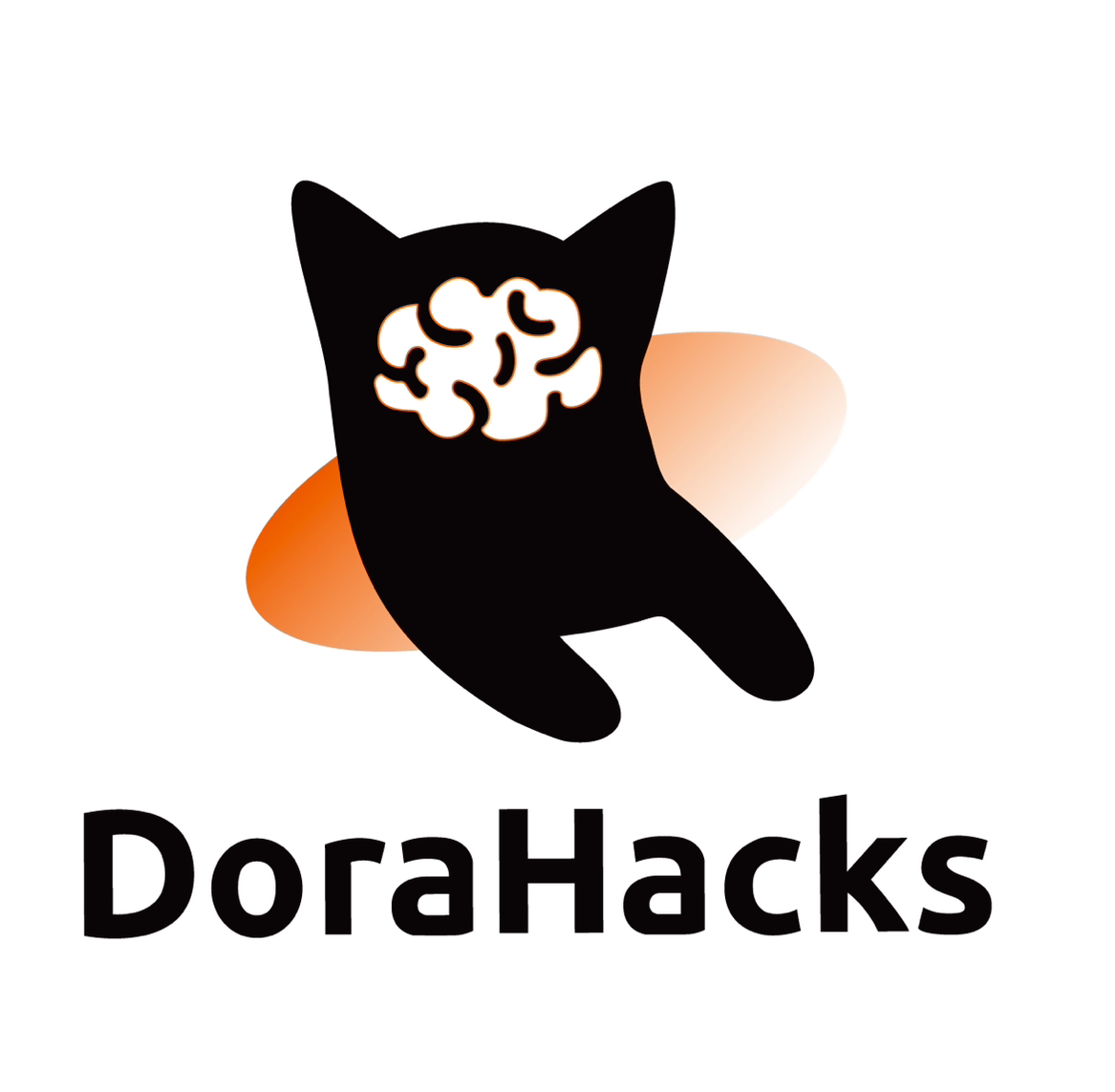4D talks about DoraHacks, the geek movement, and the development history of the encryption field in detail
image description
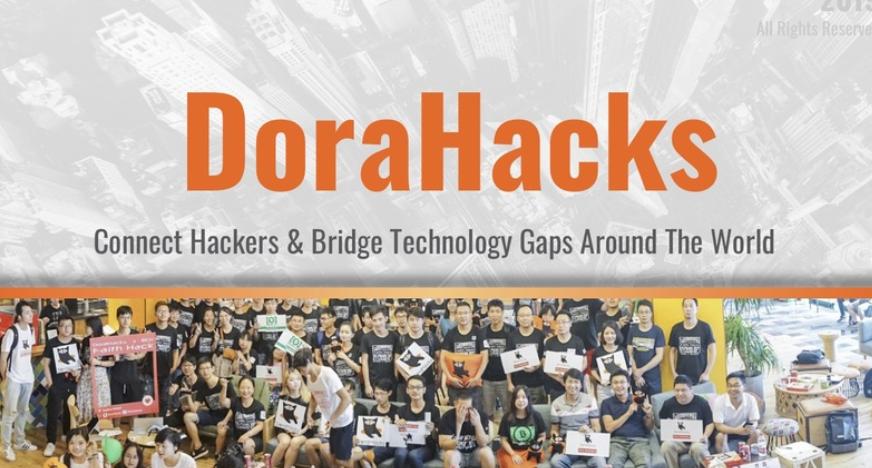
This article was written by DAOctor, Shaun@DAOrayaki.org, thanks to the feedback from the DoraHacks team.
In the past ten years, we have been in a technological era of rapid change and development. Synonyms such as open source, geeks, encryption, DAO, quantum, and interstellar immigration are constantly emerging in our living space and changing our cognitive and behavioral patterns. At every cusp, a group of evangelists and leaders of the times will be born. The promoters of the era not only have the factors of the right time and location, but also have the persistence and hardship of sitting on the bench before the wave comes.
DAOrayaki is a decentralized media and research organization that focuses on cutting-edge topics. Through continuous observation and research, we have found that every story of an evangelist behind the advancement of the technological age has a group of respectable groups and a series of far-reaching influences. topic of. To sort out the influence and role of the technology hotspot terms and evangelists in the past ten years, Hacker runs through every technological development and evolution. Today, the Hacker culture has been born for about 60 years, but it has only been less than ten years since it became a popular culture. Among them, DoraHacks, as a key role in carrying the popularization and development of the Hacker culture, is worthy of our multi-angle analysis and exploration. For this reason, we have created this article, which is elaborated from the following five parts, in order to provide industry promoters and practitioners with a guide for thinking and spiritual comfort on the road.
These five parts are:first level title
1. Open source movement and geek culture
The idea of open source has been pursued, realized, and cherished by a group of dynamic Internet supporters for years. These people pride themselves on calling themselves "Hackers". The geeks mentioned here are not the names of today's computer criminals, but the names of genius inventors, problem solvers and technologists. A saboteur who uses a network to break into other systems should be called a "Cracker."
image description

Program Data Processor No.1
In 1982, Richard Stallman, the iconic human physicist at MIT's Artificial Intelligence Laboratory (as people in the open source community like to call him"rms") to begin rebuilding the entire C language. That is, the cloning and free distribution of UNIX, which is the famous GUN operating system. GUN quickly became the focus of geek activity. In fact, for a decade or so, the Free Software Foundation, founded by Stallman, largely defined the public ideology of geek culture.
image description
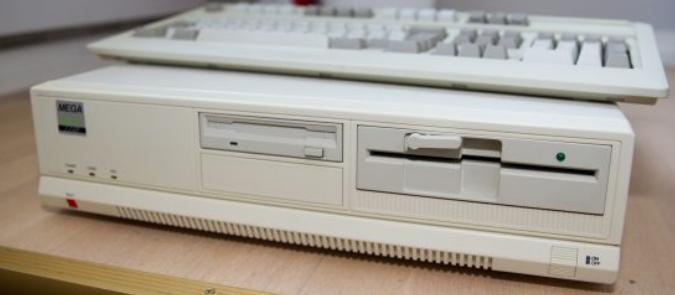
386.UNIX
The effect brought by Linux is not only technical, but more of a sociological significance. Before Linux was developed, many people believed that if software was this complex for an operating system, it would have to be a well-coordinated, small, closely interacting, centrally managed, process-rigorous team. Like building a cathedral, it was crafted by expert hands. This is a typical development model since ancient times.
However, Linux has developed a completely different path from the beginning, and its development is more like the random work of a large number of volunteers who only work through the Internet. In terms of quality, there are no strict standards and no strong organization to manage it. Just execute a simple, unthought-out strategy: publish every week and get feedback from hundreds of users in the next few days. Linux creates a selection mechanism similar to Darwinian natural selection. The objects of choice are software modifications made by developers.
To everyone's surprise, this model of development worked very well. At the end of 1993, Linux was comparable to commercial UNIX in terms of stability and reliability, and supported more software than commercial UNIX. Some commercial applications began to consider porting to Linux.
In the late 1990s, the main activities of the geek community were the development of Linux and the promotion of the Internet. After the Internet became mainstream, geek culture began to be respected and had some political influence. In 1994 and 1995, the act failed due to mass protests by geeks against the Clipper proposal, which attempted to bring encryption algorithms under the control of the US government. In 1996, a broad coalition of geeks led to the repeal of the Communication Appropriation Act. The repeal of the act prevented the government from censoring the internet. With the victory of the Communication Eligibility Act, geek culture moved from history to the present.
In the Linux community, it's less like a cathedral quiet and devout than a big sprawling marketplace, open to almost chaotic directions, full of different plans and approaches, but building a stable operating system. Why didn't the Linux system fall apart in the chaos, but grew stronger at a speed that the cathedral builders could not have imagined?
Why does this pattern work? Let's go back to geek culture and the open source community.
Geeks are a group of genius inventors, problem solvers, and technologists. Geek culture is the real drive to create an effective self-marketing and make the open source community and open source developers successful. We can use the cathedral and bazaar model mentioned in the book "The Cathedral and the Bazaar" for further analysis.
Good software works often come from the developer's personal needs. In cathedral mode, too many software developers don't need or like the software they're building. They see programming as a job just to get paid. Bugs are hard to find and take months of careful inspection to find and release. The longer and less than perfect releases are, the more people will be disappointed.
It is completely different for the Grand Bazaar model. Many users of open source projects are geeks themselves. Geeks can effectively shorten the time to find bugs. They only need a little encouragement or motivation, and in a short period of time, they can find bugs, ask questions and provide solutions. Treating users as development partners is the most effective way for a system to quickly improve code quality and debug it efficiently. The more users there are, the more effective it is at combating system complexity. Developers and testers have different mindsets about programs, programmers look from the inside out, testers look from the outside in. Open source breaks this dilemma. Since everyone has the real source code, it is easy for both parties to develop a shared expression model and communicate effectively.
"Brooks Law" once mentioned: Adding people to an already expanded project will only make the project more complicated. This sentence points out the fundamental problem in the organizational structure of traditional software development: as the number of developers increases, the complexity of the project and the cost of communication will increase by the square of the number of people, but the work results will only increase linearly. In an open source project, peripheral developers actually work on distributed, parallel subtasks, and only within that small core team would there be Brooks overhead.
This is also the main reason for the success of the "Grand Bazaar" model. This method enables tens of thousands of developers scattered all over the world to create a world-class operating system in their spare time, only through weak connection and weak cooperation through the Internet.
The prerequisite for the "big bazaar" to play a role is the "open source community". The open source community is a gift culture market that needs enthusiasm, wisdom and hard work to realize.
Most human organizational models are designed to accommodate scarcity and scarcity. The simplest organizational model is the chain of command. Scarce commodities were distributed centrally, backed by force. The most common organizational model is the exchange of economic systems. Scarce items are mainly circulated through trade and resource cooperation. Most people have both of these mental models and understand how they interact.
However, there is an entirely different organizational model, the gift culture. Gift culture is not an adaptation to material scarcity. It is an adequate adaptation to the abundance of substances. Note that abundance makes command relations difficult to maintain and exchange relations meaningless. So, in gift cultures, social status (humans have a natural drive for social status that is ingrained in the human mind through evolution) is not determined by what you control, but by what you give .
why this"Giving"of gift culture is reflected in geek culture as"Acquisition”? The main reason is that geeks give very complex gifts. Compared to other gifts, their value is difficult to assess. Only subtly depends on peer evaluation. Also, most gift cultures will have compromises, Like clan/tribal confederations, but there are no similar compromises in open source culture. That is, there is no other way to gain status than reputation.
Therefore, the social status acquisition method of gift culture and the particularity of geek gifts make geeks pursue prestige among their peers. Prestige is the most basic form of motivation for geeks.
Besides being an incentive, prestige is also a way to attract attention and cooperation. In a pure gift economy, this may also be the only way; moreover, if the gift economy, the exchange economy, and the chain of command are interrelated, then prestige may come from the former environment and spread to the latter two environments, so that geeks can Get higher status in another mode.
This is the nature of open source development itself"prestige"Motivation is also the key to the success of an open source community.
In the open source community, creative products gain more reputation than incremental improvements to existing software products; gaps in the field are easier to achieve than competing with established projects; new projects that contribute to existing projects are more likely to It is possible to get attention. As a result, open source projects tend to fill functional gaps in cutting-edge areas (some of which are very successful). From a global perspective, "category killers" and "filling in gaps" are major trends in the development of open source projects.
first level title
2. The global movement of DoraHacks: from SMOs to CMOs to DAOs
Geek culture and geeks beget the open source movement. In 2014, the word Hacker was well known overseas. But in China, Hackathon is still blank. In this context, DoraHacks introduced the first community Hackathon to China, promoting and even leading the popularization of geek culture around the world.
The global movement of DoraHacks conforms to the latest organizational management and development model. That is, from a Social Movement Organization (SMO) without a class system and a strict system, to a dynamic netizen group that has gradually evolved into a more decentralized decision-making and lower-cost operation with the evolution of the concept of flattening and Internet technology Organizations (Cyber Movement Organizations, CMOs), and then to a series of algorithms composed of decentralized autonomous organizations (Decentralized Autonomous organizations, DAOs).
secondary title
2.1 DAO: A New Type of Economic Organization
DAOs arose from imagining how decentralized technology features such as global digital assets, censorship resistance, and automated operations would change the way organizations operate. Originally called a Decentralized Autonomous Company (DAC), the more general term DAO emerged in the Ethereum blockchain community. Based on Vitalik Buterin's DAO, DAC, DA, and More: An Incomplete Terminology Guide from 2014, a DAO can be described as a capitalized organization in which software protocols inform its operations, placing automation at its center and humans at the periphery. For example, a software agreement can specify the conditions under which an organization automatically distributes funds to its members. This has led to the lingering idea that organizational value can be automated and enforced by code, which may falsely imply that tacit knowledge can be fully expressed in software protocols.
Want to invent your own financial derivative? With Ethereum, you can. Want to make your own currency? Set it up as an Ethereum contract. Want to set up a full-scale Daemon or Skynet? You may need to have a few thousand interlocking contracts, and be sure to feed them generously, to do that, but nothing is stopping you.
— Vitalik Buterin
Despite the term's hypothetical ideas, when DAOs went from theory to experiment, the community largely redefined the term DAO to mean an "unstoppable" or censorship-resistant enterprise. The first DAO, called The DAO, became one of the biggest spectacle to date in the Ethereum blockchain community in 2016, raising over $150 million in ETH in 2016 as a decentralized venture fund. However, the experiment proved short-lived when The DAO was hacked a month after launch.
Then came the DAO winter, a period of freezing even years before the overall cooling of the cryptocurrency market. Nevertheless, even in this relatively long cold winter period, the builders who are deeply involved in the DAO field still have not stopped exploring. MakerDAO was founded in 2015, and as its growing popularity has attracted new talent to work in the field. And Aragon, co-founded by contributor Jorge Izquierdo, started developing tools for The DAO in 2016.
It was not until 2018, as the DAO infrastructure and platform developed and matured, that large DAO-related initiatives received attention again. Today's DAO is a far cry from its infancy, closer to what has been described as a voluntary association that conforms to the operating principles of digital corporatism. As voluntary associations, they are cross-jurisdictional ways for strangers, friends or unlikely allies to come together anonymously to achieve a common goal, supported by token models, incentives and governance. Members of a DAO can have representative ownership of their digital assets through tokens, which often serve as governance rights at the same time. Despite the many hypothetical ideas of the term, the community largely redefined the term DAO to mean an "unstoppable" or censorship-resistant enterprise when it moved from theory to experiment.
Decentralization:
Decentralization:Community rules are formulated by the community, not controlled by a centralized organization, and have no hierarchical structure.
Tokenization:Tokens are used as participation conditions and incentive mechanisms to promote the development of DAO, etc. It should be noted that tokens can be valuable tokens or worthless points.
Autonomy:Community members do not need to be hired to participate in the governance of the community independently.
Autonomous Rationality:The operation of DAO is jointly governed by all community members in the form of community proposals and voting.
Openness and transparency:Most DAOs are based on blockchain technology and smart contracts, their rules and roles, and the process and results of each decision from proposal, discussion to voting are publicly recorded and traceable.
The rapid rise of DAO is, on the one hand, the historical inevitability of the development of centralized organizations towards decentralization, and on the other hand, it is also due to the continuous improvement and subdivision of the underlying infrastructure and ecology.
"2020 belongs to DeFi, 2021 belongs to NFT, and 2022 will be the year of DAO"
— Messari 2021.12
As a new form of economic organization, DAO is constantly developing and subdivided into different application scenarios: developer team (DeveloperDAO), DeFi protocol community (MakerDAO), public chain developer community (OpenDAO), legal service organization (LexDAO ), non-profit organization (UkraineDAO), music NFT organization (BeetsDAO), large art organization (PleasrDAO), decentralized media (DAOrayaki), etc.
secondary title
2.2 Global Movement of DoraHacks
"The design principle of all DoraHacks activities is "Hacker-centered", so we will provide the best food, beer, drinks, music, and every process detail has been designed. Dora's volunteers are strictly screened. More than 50 volunteers signed up for the event, including teachers and students from Peking University and Tsinghua University, as well as models and flight attendants. Everyone admires Hacker, believes in the power of technology, and wants to see everyone's technical magic in the Hackathon."
---DaroHacks Penny
Often it starts with a simple idea — a social movement
On November 23, 2014, the Owl Lab at Tsinghua University, which can only accommodate 60 people, became the place where DoraHacks was officially announced. For the first time, DoraHacks introduced an "introduced new word" Hackathon (hackathon) into the domestic public view.
DoraHacks hosted the first hackathon of Tsinghua University, Peking University, Beihang University, Shanghai Jiaotong University and other universities in the early days of 2014-2015. Most of the participants were college students from the schools they hosted. As China's Internet enters the golden age, college students majoring in science and engineering have a strong interest in hacker culture and geek technology, and they also have a strong subjective desire to communicate with other alumni. This interest/willingness can even be quickly transformed into social productivity.
image description
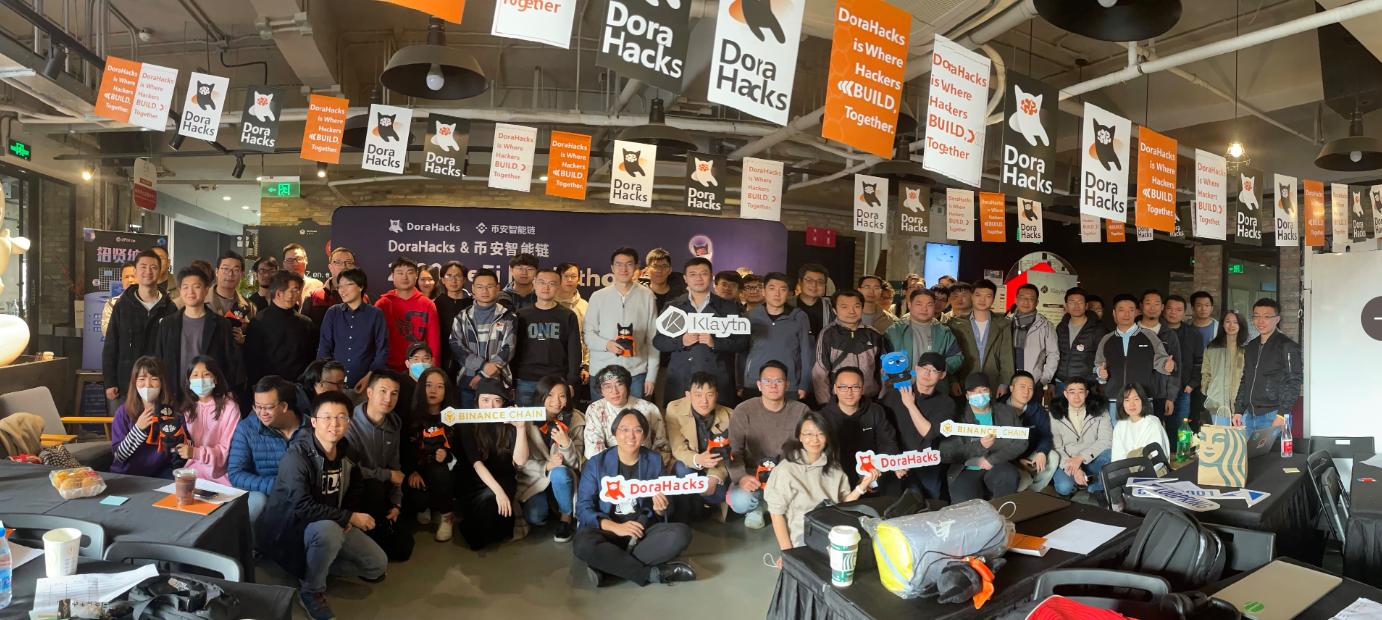
DoraHacks & BSC Hackathon 2021
2014-2016 is the first milestone development stage of DoraHacks, and it is also the years when China's Hacker culture was promoted. Here are a few notable turning points:
First, Hacker's understanding. Before DoraHacks, everyone's understanding of Hack was more at the level of derogatory hackers. The emergence of DoraHacks has made the public begin to understand and accept: "Hackers are experts or geeks who help humans overcome many complex scientific and technological problems."
Secondly, Hackathon game rules are changed, a new mode is injected. In less than three years of development, DoraHacks used 1,000 US dollars as the start-up capital (the start-up capital of DoraHacks was the 1,000 US dollars that Eric, the founder of DoraHacks, returned to him from his friends as the start-up capital), not only successfully held hundreds of events in China. This Hackathon has connected nearly a thousand Hackers from Peking University, Tsinghua University, Shanghai Jiaotong University, etc., and more importantly, the unique geek culture has changed the original game rules of the entire industry, allowing a company that was originally only closed inside a big factory, or a well-known The form of small-scale Hacker competitive activities within universities has become a place where all Hackers around the world can collaborate and communicate together.
"The design principle of all DoraHacks activities is "Hacker-centered", so we will provide the best food, beer, drinks, music, and every process detail has been designed. Dora's volunteers are strictly screened. More than 50 volunteers signed up for the event, including teachers and students from Peking University and Tsinghua University, as well as models and flight attendants. Everyone admires Hacker, believes in the power of technology, and wants to see everyone's technical magic in the Hackathon."
---DaroHacks Penny
From 2014 to 2016, the development of DoraHacks can be summarized as: a social movement linking hackers and popularizing geek culture. It is centered on the soul character Eric, and through simple beliefs (non-refined, planned goals), it drives a group of people with common beliefs to form a loosely managed place. This group of like-minded people can learn from each other and collaborate with each other, but the pace is not necessarily uniform, and they may not have a clear and clear understanding of the future development plan of the existing organization. There is no clear class division within the organization. By adding new and old time and operating Skill proficiency divides roles.
Follow the trend and get more help from DAO
The difference between inevitable failure and occasional success is often the one or two things that are right out of a hundred.
— Editor's note Shaun
image description
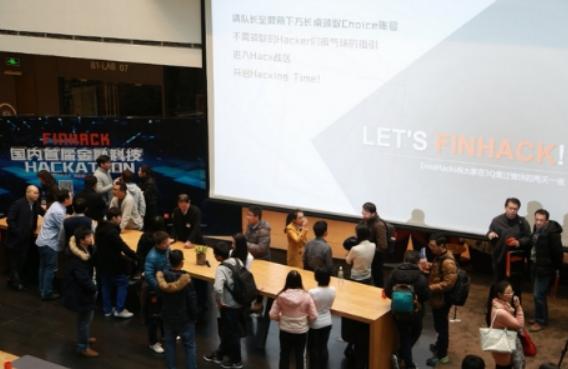
DoraHacks FinHack 2017
"Hackathon was organized in 2015 and 2016, and only a few key universities such as Peking University, Tsinghua University, Beihang University, and Beiyou can organize it. There are few hackers in the society, and everyone is still coding in BAT, pain and happiness. 17 years In the beginning, I organized the first nationwide Hackathon Finhack, 70% of which came from Baidu, Tencent, etc. in the industry. I was surprised at first. Later, the events in Shanghai and Shenzhen had similar situations. For the first time, I felt that the Hacker community was popular with everyone. Accepted."
— DoraHacks COO Penny
DoraHacks, which is favored by big companies, not only gained more exposure, but the involvement of capital also forced the founding team of DoraHacks to seriously think about the future direction of organizational development. DoraHacks from 2014 to 2016 is a social movement organization mainly linking Hackers and promoting geek culture. It is not for profit, and its slogan is to pursue the ultimate service experience for every geek. However, this SMO-style loose organizational structure is not enough to support the rapid expansion of DoraHacks' national scale. The Matthew effect of the Internet industry determines that if a startup company lingers in place for 6 months, it is almost equivalent to declaring death.
image description
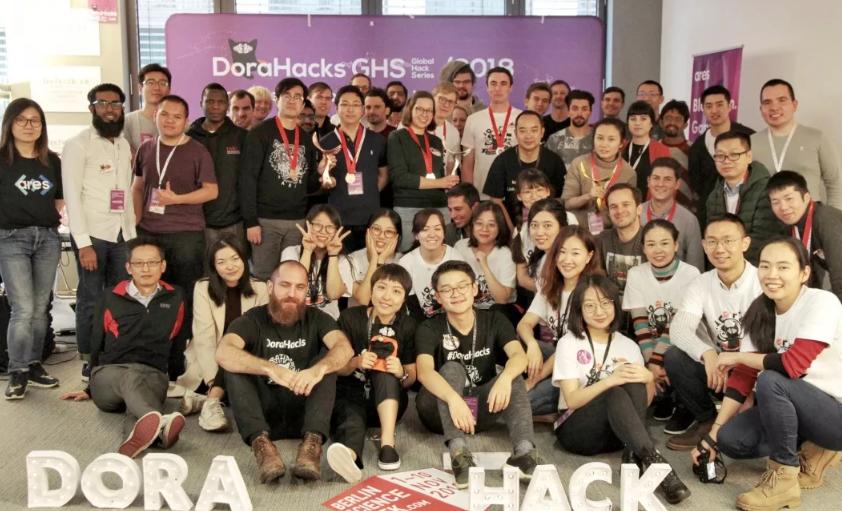
Group photo of DoraHacks GHS 2018 in Berlin, Germany
2017-2018 DoraHacks is moving towards a new stage. The reason why DoraHacks can develop rapidly at this stage, and the scale of development has changed from a single campus to globalization, in addition to changes in the organizational model, the geek culture, the open source movement and the global secondary outbreak of emerging technologies (blockchain) , It also played a role in fueling the flames at critical points. At this stage, DoraHacks put forward the operation concept of "connecting" every geek in the world, which is very suitable for the development needs of the Internet industry at that time.
The story of "too big a step, easy to..." is always on our lips, but it is inevitable
DoraHacks in 2019 is in the "growth period" of the "enterprise development cycle theory". Like all other startups that have experienced the growth period, they have financing, experience, scale, and especially a roadmap for scale expansion As well as KPI, it will start to neglect fine-grained management. In other words, in the development stage of rapid expansion of the enterprise, there are many more important tasks than fine-grained. Therefore, it is inevitable to step on the pit.
The most sensational event of DoraHacks in 2019 is undoubtedly the "Thousand People Hackathon of the Fourth Industrial Revolution" held in Beijing. The significance of the event itself to positively promote the image of domestic geeks has been reported by various media.
The development of scale, especially the structure of the centralized organization, will inevitably lead to the gradual emergence of problems such as bloated organizational management structure, low decision-making efficiency, and soaring invalid expenditures. At the same time, the world has started a wave of reflection on the form of Hackathon. The background of the wave of reflection is the sudden change of the global environment (epidemic, etc.), the traditional division of labor and cooperation of human beings has changed, distributed (remote) office has gradually become the mainstream office method in the industry, and the heavy mode similar to offline gatherings is no longer suitable social development needs at this time. At the same time, the form of hackathon pays too much attention to the competition itself and lacks a follow-up mechanism for the participating projects, resulting in a lower and lower project conversion rate (5%-8%). The most fundamental impact of this wave of reflection on DoraHacks is to question its application and the applicability of iterative products. Even, the sustainability of its business model is facing a severe test.
Not every entrepreneurial company can become a "pig" standing on the wind in the growth stage.
2019-2020 is a stage for DoraHacks to explore new organizational models and reflections. DoraHacks captures some key words in the development stage of the new technology of Internet and blockchain. However, the wind will always stop, or the wind direction will always change. As the market environment changes, enterprises must also adjust their development strategies in a timely manner, externally adjust their business plans and product plans, and internally adjust their organizational structure.
Reborn again, Gong DAO will naturally become
DoraHacks is the organizer of the global hackathon and one of the most active multi-chain Web3 developer communities in the world. It launched a global hacking campaign and provided crypto-native toolkits to help developers around the world to raise funds for their ideas and BUIDL. So far, more than 2,000 projects from the DoraHacks community have received more than $15 million in grants and other forms of donations from global supporters, and it has about 100,000 monthly active users from 152 countries. A large number of open source communities, DAOs, and 20+ major blockchain ecosystems are already using Dora's infrastructure (dorahacks.io) for quadratic funding, community contributions, hackathons, bounty distribution, and governance of its developer community.
— Excerpted from DoraHacks.io
DoraHacks, reborn from Nirvana, has overcome many insurmountable obstacles for start-up companies to grow and mature companies. With the evolution of various organizations around the world from centralized organizations to decentralized organizations (DAO) in the past two years. DoraHacks has successfully seized new opportunities in the development of the Web3 field. Today's DoraHacks not only has more stable traffic and a more professional network platform, but also has independently developed more product lines, such as Dora Factory, Hackerlink (later DoraHacks.io), HackathonDAO, etc., and has also incubated many cutting-edge innovations project. The organizational structure of DoraHacks has also evolved from the SMO and CMOs to the decentralized organization DAO model.
The evolution of various organizations around the world from centralized organizations to decentralized organizations (DAOs) is related to changes in the real environment (such as climate change, epidemic storms) on the one hand, and the continuous development of new technologies (Web3, blockchain) on the other hand. related to iteration. More importantly, it is closely related to the path of early development of the enterprise, and even the values of the founder/founding team.
The most notable feature of a decentralized organization (DAO) is the decentralization of management by catalytic figures and even the core team. From many recent interviews with Eric, it can be seen that how to transfer the control of DoraHacks from a centralized organization to members of the organization has been a topic he has been seriously exploring. This kind of change seems to be just a simple organizational power, and the change in structural adjustment actually requires scientific and complex technological means to assist. Its sub-brand DoraFactory is one of its strongest proofs.
"Dora Factory provides a big playground for all organizations to easily create DAOs, and prepares a lot of cool on-chain governance functions to meet the key needs of DAOs in terms of governance, fundraising, collaboration, management, etc."
"For us, DAO is not just a voting machine. DAO should be a complete set of rich on-chain governance solutions. To this end, we can build an open infrastructure, and all DAOs can be freely, plug-and-play This is what we call a DAO-as-a-Service infrastructure. (DAO-as-a-Service)”
— Dora Factory Steve Ngok
Today's DoraHacks happens to have all the key elements of transformation: a well-structured core team, a cutting-edge technological network platform, a group of partners with high fighting spirit and unified goals, and a belief with ambitious goals. For the rest, we might as well leave it to time and observe patiently.
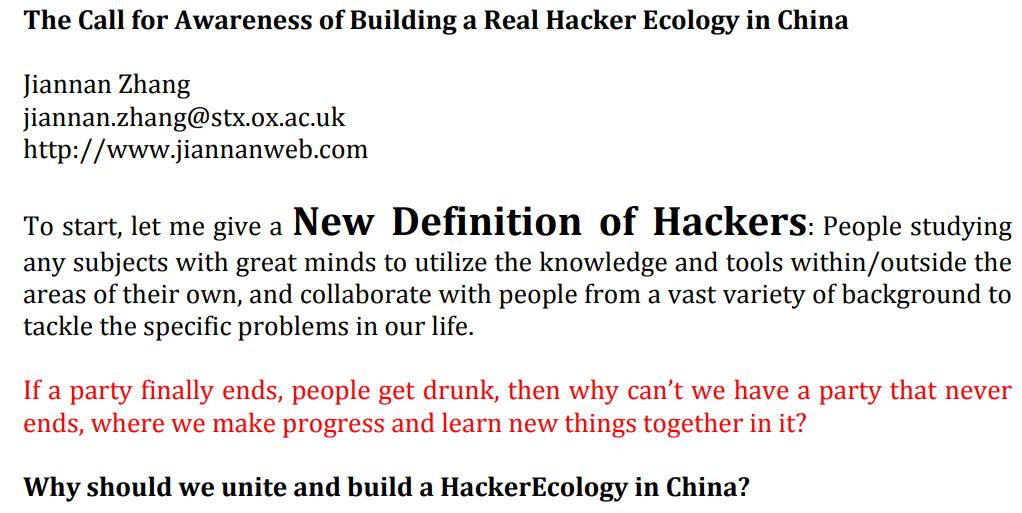
"If there is a banquet in this world, where a group of like-minded friends who are infinitely curious about new things and new technologies can sit together and help each other grow through casual chatting and laughing, how much it would be Wonderful!"
— The English version is excerpted from a short article written by Eric, the founder of DoraHacks, during his stay at Oxford University in February 2014, and the Chinese version is translated by the editor
first level title
3. Dorahacks and Open Source Developers: From Link Hacker to Funding BUIDLer
secondary title
2014-2019: Hackers and links
In 2014, there was no geek organization in China, and the geek community was even blank, while Chinese developers were exploding. In this case, the absence of Hacker and the open source community will inevitably lead to the phenomenon mentioned in "Brooks Law" above. Linking global open source developers and building a pure Chinese open source community is an opportunity and a mission. Therefore, DoraHacks takes this as its mission to build the first Hacker community in China. As a connection platform, the Hacker community not only connects Hackers with Hackers, but also connects Hackers with the industry, allowing Hackers to get in touch with new problems in reality.
To achieve this goal, DoraHacks links global Hackers and popularizes geek culture and builds a geek community through the following models:
1) Hacker venue construction
In 2014, DoraHacks started from Tsinghua University's Owl Lab. Within five years, it has gone from some college sports to national sports and then to global sports, creating many firsts in China and even in the world.
In 2013 Eric organized CERN Webfest 2013 at CERN (where the World Wide Web was born)
At the end of 2014, the first large-scale university Hackathon in mainland China was held at Tsinghua University
In 2015, the first Google Solve For X for kids in mainland China and nearly 60 hackathons were held
In 2016 and 2017, the first large-scale fintech Hackathon in mainland China was held
In 2017, the first large-scale blockchain Hackathon in Beijing
In 2018, hackathons were organized in 15 cities in 8 countries around the world, and Matic and other star teams participated
In 2019, China's first and largest thousand-person Hackathon: Industrial Revolution 4.0
During this process, DoraHacks insists on starting from practical problems, and does not blindly cater to the needs of industries and enterprises, thus making Hacker culture popular and forming the largest geek community in China and one of the most active geek communities in the world. DoraHacks is in the process of sticking to its original intention. A pure geek place has been built for Chinese open source developers.
2) Hacker link
The ultimate goal of the geek community is to build products, especially category killers and fill gaps in the field. In the initial stage of DoraHacks construction, Chinese open source developers had two characteristics: no clear values and no original masterpieces. This means that in the global open source community, China cannot form its mainstream influence. Therefore, Dorahacks links real-world problems with Hacker, solves real-world problems and forms its unique influence.
secondary title
2020-~: BUIDLer and funding
Since 2020, a series of changes have taken place in the global situation and environment, and these changes have intertwined to give rise to new chemical reactions.
First of all, with the outbreak of Covid-19, anti-globalization forces have developed from past anti-globalization thoughts and anti-globalization policies to "de-globalization actions." The world has changed from free movement to mutual blockade, and the daily office mode has changed from centralized offline office to distributed online flexible work mode.
Secondly, the arrival of the bull market in the encryption industry has promoted the innovative application and development of the encryption industry and has become a major emerging force in the geopolitical field. For example, tens of millions of funds were crowdfunded for Ukraine’s defense cause; Russia was kicked out of SWIFT; the Biden administration announced an executive order on digital asset regulation, and acknowledged that cryptocurrencies and Web3 technology are crucial to the future of the U.S. national economic competitiveness. important.
The outbreak of the epidemic and the development of encryption technology have caused intertwined changes in the fields of politics, economy, culture and technology. In this large environment, the Hackathon model has also changed from a centralized extreme development model within a limited time to BUIDL anytime, anywhere.
Why is BUIDL emphasized. The encryption industry and Web3 are the new frontiers for geeks. BUIDL is a derivative term of HODL, and usually refers to participants in the cryptocurrency ecosystem, regardless of the ups and downs of the overall market trend, are constantly creating new products and services. Even if cryptocurrencies are in a bear market, true believers will continue to cultivate, build and expand the ecosystem. Therefore, BUIDLer is someone who really cares about the industry and hopes to promote blockchain and cryptocurrency to the world!
DoraHacks has focused on the Crypto and Web3 fields since 2017, and has developed from Hackathon to building infrastructure and products. In 2020, according to the characteristics of the Crypto industry, DoraHacks released its quadratic financing funding mechanism and further evolved into a MACI-based quadratic financing funding mechanism.
For geeks, it is very difficult to turn open source development into a product, explore its business model and initially start-up funds. In this process, DoraHacks has changed its relationship with Hacker from link to BUIDLer through the infrastructure platform and funded even further multi-chain movements. The specific mode is as follows:
Provide more frequent exposure opportunities for BUIDLer
DoraHacks.io is a platform that attracts the attention of many investment institutions and individuals. The more you apply for DoraHacks Grant/Hackthon, the more investment institutions or individual investors may pay attention. Not only that, DoraHacks will do exclusive Youtube live broadcasts for almost every project, giving BUIDLers the opportunity to expose themselves. If it is a Chinese team, you can also arrange a live broadcast at station B. DoraHacks has more than 50,000 followers on Binance live broadcast alone. Once a project is exposed, the total viewing volume can reach more than 200,000 times.
Provide more ecological support for BUIDLer
No matter what kind of ecology, for its own better development, it will definitely support some emerging projects in the ecology. The more mature the ecology, the higher the threshold for incubation. For example, Ploygon, Solana, and BNB, if you want to join these mature ecosystems today, you will inevitably have higher requirements for the project. In the same way, the ecology itself is still in the early stage of development, and the requirements for incubating its own ecological projects will be much lower, such as Moonrive, Boba, etc. No matter what kind of ecology, DoraHacks can give BUIDLer natural ecological support.
Better BUIDLer circle
Inter-industry cooperation and information exchange are very important. DoraHacks users are located in Europe, America, China, Africa, and Southeast Asia. The circle culture allows BUIDLers to better understand project preferences and development conditions in each region, and establish cooperation.
Provide more practical funding for BUIDLer
BUIDLer on DoraHacks can have the opportunity to get actual financial support. Currently, there are two funding methods: Grant and Hackathon
Provide seed round investment for BUIDLer
Each ecological Grant/Hackathon will have a seed investment fund. If you are interested, you can personally inquire about the latest status of various ecological seed investment funds on the DoaraHacks website.
To date, more than 2,000 projects from the DoraHacks community have received more than $15 million in grants and other forms of donations from global supporters, and it has approximately 100,000 monthly active users from 152 countries. A large number of open source communities, DAOs, and more than 20 major blockchain ecosystems are already using Dora's infrastructure ( DoraHacks.io ) for quadratic financing, Grants, community contributions, hackathons, bounty distribution, and the development of its developer community governance.
first level title
4. The history of DoraHacks and the encryption industry
secondary title
The development of the Internet and the blockchain before the birth is highly consistent at key time nodes
In the 1960s, the establishment of the first wide-area computer network marked the birth of the Internet.
70s, the development of electronic mail system. Bailey W. Diffie and Martin E. Hellman, two masters of cryptography, published the paper "New Directions of Cryptography", which established the development direction of the entire cryptography.
3.80s, creation of ethernet. Lamport proposed the Byzantine Generals Problem, marking that the reliability theory and practice of distributed computing have entered a substantive stage.
In 1982, Leslie Lamport extended the process of reaching consensus and deciding whether to send troops in the military to the computing field, trying to establish a fault-tolerant distributed system, which can ensure the normal operation of the system even if some nodes fail. The nodes based on zero trust reach a consensus and ensure the consistency of information transmission.
—Byzantine Generals Problem by Lamport
In the 90s, the World Wide Web (www.) was launched. The HashCash method, that is, the first generation of POW (Proof of Work) algorithm appeared.
In 2001, the first browser and search engine were created. At the same time, Napster, EDonkey 2000 and BitTorrent were born one after another, laying the foundation for P2P network computing.
In 2008, Satoshi Nakamoto published the famous paper "Bitcoin: A Peer-to-Peer Electronic Cash System", marking the birth of Bitcoin/Blockchain.
Satoshi Nakamoto mined the genesis block with his first version of the software in January 2009. Contains the sentence: "The Times 03/Jan/2009 Chancellor on brink of second bailout for banks.", like a spell, opened the era of blockchain/Bitcoin.
secondary title
From 2008 to 2013, the blockchain 1.0 era
In September 2010, Slush, the first mining farm, invented the cooperative mining method of multiple nodes, which became the beginning of the bitcoin mining industry.
In April 2011, the official first version of Bitcoin (https://bitcoin.org/en/version-history) officially recorded (https://bitcoin.org/en/version-history) was released. This primary version supports uPNP, which realizes our daily use. The capabilities of P2P software, Bitcoin with P2P capabilities.
In 2013, Bitcoin released version 0.8, which is the most important version in the history of Bitcoin. It has improved the internal management of the Bitcoin node itself and the optimization of network communication. So far, Bitcoin has truly supported large-scale transactions on the entire network, becoming the electronic cash conceived by Satoshi Nakamoto, and truly exerting global influence.
secondary title
Late 2013 - 2018, blockchain 2.0 era, Ethereum, smart contracts, open source movement, "Hackathon", DaraHacks
V God"V God"image description
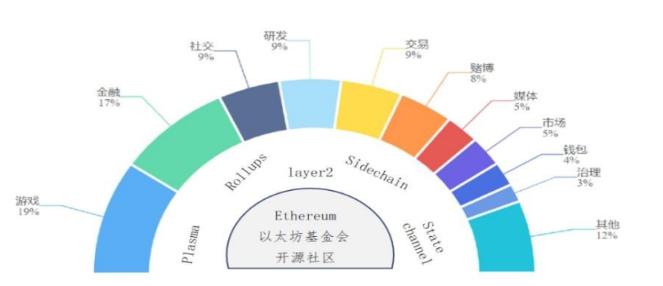
As of June 2021, Ethereum is the largest and largest blockchain infrastructure ecological network, with a total of 5,900 nodes and 56 million address accounts. The nodes are located in the United States, Germany, China, France, and Singapore.
image description
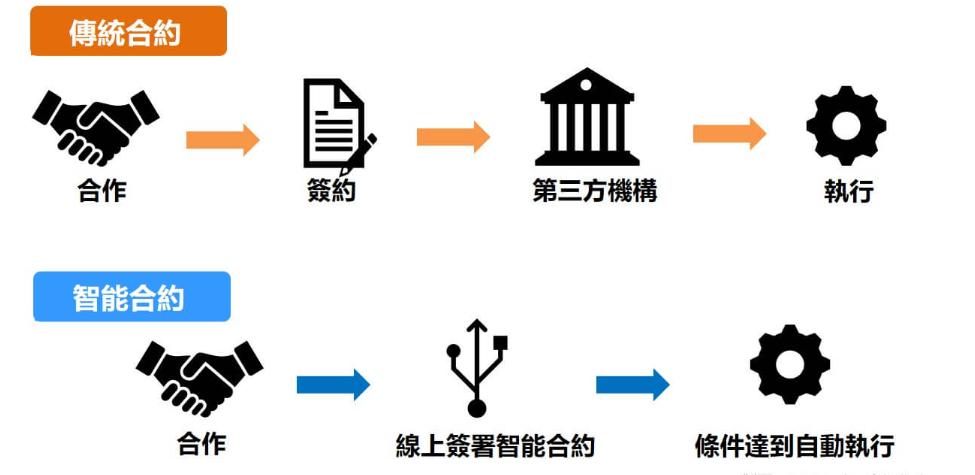
A brief description of the smart contract
In 2014, DoraHack was born and brought Hackathon to China. Hackathon, which is a specific manifestation of the global open source movement, was initially mostly carried out in a fixed small circle within well-known universities, technology companies, and research institutes. The Hackathon organized and initiated by DoraHacks in 2014 catered to the needs of domestic geeks who urgently need to communicate with each other during the period of rapid development of new technology (block chain). New innovations often require a group of people to brainstorm and collide with each other.
DoraHacks provides a good container for the sparks of these thought collisions, not only that, but also allows more people who do not understand the geek culture and the blockchain world to participate, and promote the development of the blockchain.
"Early DoraHacks was just a Hacker community. In November 2014, we had already done Hackathon of various new technologies in Tsinghua University. Because Hackathon is a standard activity in the geek community, such as Tsinghua Thacks, Peking University Hackathon, The Beihang Hackathon, the Handover Hackathon, and the Hackathons of many universities were all done by DoraHacks.”
—DoraHacks Founder Eric Zhang
In 2017, DoraHacks held the first Hackathon with the theme of "FinHACK" in China, marking the official introduction of the blockchain/cryptocurrency industry into the Chinese public.
In 2018, DoraHacks developed into a global Hackathon organizer. Hackathons have been organized in nearly 20 cities in 8 countries around the world, and developers in the community cover dozens of countries.
secondary title
2019 — ~ Blockchain 3.0: Distributed operations, complex smart contracts, multi-chain/cross-chain infrastructure construction, HackerLink, Dora Factory, quadratic financing mechanism, MACI…
In 2019, the encryption industry has entered a critical period of bull-bear alternation, and the market has gradually returned from frenzy and excitement to prudence and pragmatism, washing away the bubbles. In the same year, DoraHacks held the "Thousand People Hackathon of the Fourth Industrial Revolution" in Beijing, China.
image description
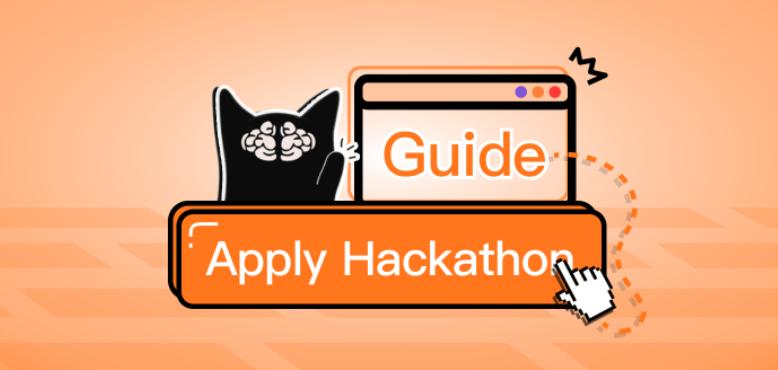
With the support of the DoraHacks global geek group, HackerLink has served hundreds of companies around the world in just three months after its launch, with orders exceeding 15 million. Realized countercurrent movement and rapid growth.
In 2020-2021, one of the main issues facing blockchain technology is scalability. Bitcoin still suffers from transaction processing times and bottlenecks. Many new digital currencies have attempted to modify their blockchains to accommodate these issues, with varying success. Ploygan, Solana, Filecoin, BNB, opensea, ETH, BOBA, Moonrive, Avalanche and other public chain ecology, new ecology, L2...As long as you do funding for open source developer projects, it will be initiated in DoraHacks. DoraHacks is the early stage of each ecology. project gathering place.
DoraHacks provides these projects with high-quality exposure channels and a way to quickly connect to the market. Many BUIDLers let more people know themselves through DoraHacks. In 2021 alone, more than 30 mainstream Web3 ecological application platforms have held Hackathons on DoraHacks.io and issued Grants, and a total of more than 2,000 new early-stage geek open source projects have emerged.
In March 2021, Dora Factory, incubated by DoraHacks, was born. Dora Factory is a multi-chain DAO-as-a-Service decentralized governance infrastructure (DAO-as-a-Service).
In February 2022, the largest offline Hackathon of the Ethereum ecosystem in the United States- ETHDenver 22 used DoraHacks.io as the hackathon project platform, attracting the participation of 171 early projects of the Ethereum ecosystem from all over the world.
Today's DoraHacks partners are all over the world. In the blockchain industry, major ecosystems from ETH to Polkadot are incubating projects through DoraHacks' Hackathon.
"To give a few examples, many builders of the encrypted world participated in DoraHacks activities very, very early; for example, Matic in the Indian community, Matic was listed on Binance in 2019, and it should be the first project in Binance's entire IE0 market. But Matic actually participated in the hackathon organized by DoraHacks in Bangalore, India in the summer of 2018, and of course they were still in a relatively early state at that time.”
— Excerpted from an exclusive interview with Binance Smart Chain community by DoraHacks founder Zhang Jiannan on January 27, 2021
According to public information, as of the beginning of 2022, various early high-quality projects emerging from the DoraHacks community include:
Functionland、Manta、ETHSign、deBridge、Strips Finance、Yin Finance、Solend、1SOL、StepN、Raydius、Zecrey、Taker Protocol、Izumi、ZKLink、Pawnfi、InsurAce
(This article screens out 21 representative project names and attaches links)
These early projects incubated by DoraHacks involve investment institutions including: Mask Network, Incuba Alpha, SevenX Ventures, Hash Global Capital, Metaverse Capital, Zonff Partners, NGC Ventures, Puzzle Ventures, etc.
DoraHacks also has cutting-edge contributions to the industry in the innovation of blockchain infrastructure.
In March 2021, Dora Factory, incubated by DoraHacks, is a multi-chain DAO-as-a-Service infrastructure (DAO-as-a-Service). The product has actual user data, and the community has a high degree of participation. User base, community funding is an important part of the development of Dora Factory. The "quadratic financing mechanism" established by Dora Factory is a sustainable funding mechanism, which enables the Dora community to continue to support ideas/projects, and finally realizes the automation of the mechanism through HackerLink.
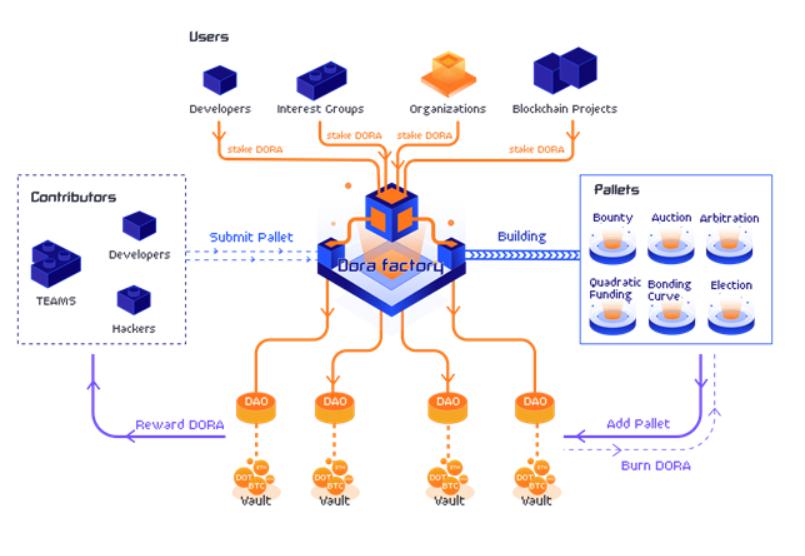
Before the emergence of quadratic financing established by Dora Factory, the industry generally faced four mechanism design problems
Sybil attack: is an online network security system threat that refers to an individual's attempt to control the network by creating multiple account identities, multiple nodes or computer coordinates. It's the same principle as creating multiple personal social media accounts. (The term "Sybil" comes from the case of a woman named Sybil Dorsett who was diagnosed with "multiple personality disorder.")
Collusion: Collusion is a non-competitive, secret, and sometimes illegal agreement between competitors in an attempt to disrupt the fair order of the market.
fraud
unfair
Dora Factory's quadratic financing provides a corresponding solution to the above problems
Solution to "Sybil Attack": Dora's solution to Sybil Attack: use DoraID for anti-Sybil Staking. In the quadratic funding V2 protocol, DoraID is integrated to verify voter identities based on staking (in this case, we call it anti-sybil staking). DoraID is a general framework for staking. It allows users to hold DORA tokens for a "defined amount and time." It was originally proposed by Dora Factory developers at the end of March and is now deployed on Ethereum and BSC.
In previous quadratic funding, post-round analysis played an important role in adjusting the final results and maintaining fairness. By using DoraID, the workload of post-round analysis can be greatly reduced. The principle of anti-sybil pledge is not to check the legitimacy of each vote like centralized solutions, but to greatly increase the cost of Sybil attacks through a large voting weight, making it practically infeasible. That is, the costs of making a Sybil attack far outweigh its benefits.
The solution to "collusion": Turn the voting process into a non-cooperative game. A basic solution is MACI. First of all we all vote through an administrator. Then the administrator will issue a public key to the entire market, the private key administrator is kept by the administrator, and all information is encrypted by the public key, so you can only see the ciphertext of everyone's information, but not to plaintext. To put it simply, everyone encrypts their votes, and the administrator publishes a result, and then uses zero-knowledge proof to prove that the result is true without publishing any details and processes.
The administrator is a centralized node, but the extent to which this node can do evil is limited. First, administrators cannot publish wrong results, which is guaranteed by zero-knowledge proofs. But administrators can do other bad things, such as procrastinating, not publishing results, or disclosing private information in private.
A solution for "anti-fraud": add anti-fraud functionality through some level of smart contract management control and front-end review. HackerLink has implemented a review mechanism to verify project identities. First, there are two features that allow project owners to automatically verify their GitHub and Twitter ownership. Additionally, it allows for the deletion of a project that proves to be fraudulent, and the matching funds will be automatically recalculated and redistributed to other members of the community.
The solution to "unfairness": a quadratic funded progressive tax mechanism was designed and simulated. The algorithm allocates tax after each call to the vote() function. In the quadratic funding V2 protocol, we incorporate a progressive tax function into the voting process.
Minimal Anti-collusion Infrastructure MACI (Minimal Anti-Collusion Infrastructure)It is one of the core modules of the Dora Factory Ethereum factory. By encrypting the vote and providing zero-knowledge proof for the result, it realizes private voting and transforms the voting process of on-chain and off-chain governance into a non-cooperative game to achieve anti-collusion the goal of. The anti-collusion problem is the holy grail of on-chain governance technology, and solving the anti-collusion problem is a necessary condition for on-chain governance to scale.
The framework idea of MACI was proposed by Vitalik Buterin, and the original Applied ZKP team implemented the basic open source code library. DoraHacks systematically optimized the security and efficiency issues in the MACI code. At the ETH Denver conference on February 20 this year, DoraHacks launched the first medium-scale MACI quadratic funding round. More than 2,000 developers and 10,000 participants will conduct zero-knowledge quadratic voting through the DoraHacks platform. This is the first medium-scale application of MACI and on-chain privacy voting.
first level title
5. Inventory of the future layout and development of Dorahacks: a new multi-chain movement and the expansion of Non-crypto
Just like DoraHacks connected early projects with every geek in the way of connection, DoraHacks, through its own contributions during the eight years of rapid industry changes, has integrated "geek culture", "open source movement", "district Blockchain", "Web3", and "Hackathon" are closely connected together.
Geeks are always connected to the cutting edge. As the world's largest geek organization and one of the most active Web3 multi-chain developer communities, DoraHacks has been constantly exploring in frontier fields. Through observation, research and analysis of the development process of DoraHacks, it is not only for the industry's Participants have more inspiration and more thinking, and want to take this opportunity to have a glimpse of the future development layout of DoraHacks.
Among the various clues that have been captured, we found several obvious clues to the future development of DoraHacks.
First, the continuous innovation of infrastructure. "A never-ending hacker movement" and "Web3 multi-chain developer community" should not just be links and Grant. From the application of a series of infrastructure on the DoraHacks platform, we can see that DoraHacks is improving the efficiency of the industry through innovation at different macro and micro levels, such as voting mechanism, funding mechanism, incentive agreement, etc.
Second, broader community engagement. As the world's largest geek organization, most users know about DoraHacks, and it is fixed in the Web3 community. Through our observation, for example, DoraHacks found in the 2022EthDenver bulid Space track and some special cases of funding multiple non-Crypto projects. The future development of DoraHacks will surely expand to a wider world, organizing and serving more Hackers.
Finally, DoraHacks will pay more attention to the needs of Hackers. Hackers are a group of people who solve real problems. The question itself contains real value. DoraHacks will always focus on Hacker itself, pay attention to Hacker's ideas, and enable more Hackers to do what they like to do without worrying about survival. As for the definition of Hacker, it must not be limited to open source developers.
The Web3 ecology is rich and colorful. Possess a diversity of technology, infrastructure, community culture, etc. The conservative liberalism of the Bitcoin community, the neoliberalism of the Ethereum community, and the bottom-up GameFi innovative application of the BSC ecology. Regardless of technical or cultural aspects, Dorahacks will support the development of multi-chain ecology in many ways.
We have reason to believe that,DoraHacks, which has been at the forefront of the industry, is bound to set off a new multi-chain and Non-crypto expansion movement in the future.

